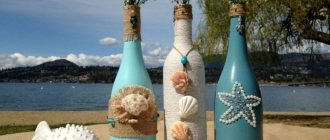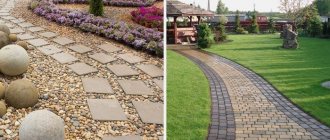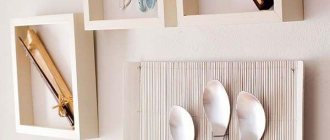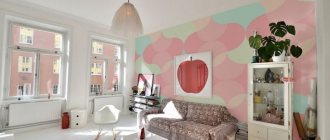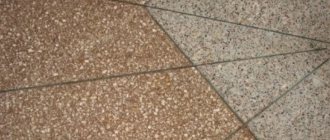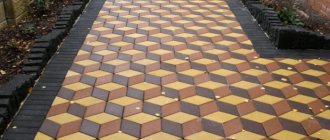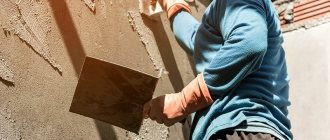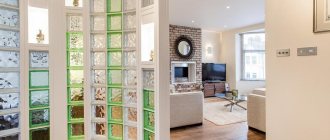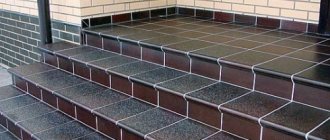What is stained glass?
Stained glass is a transparent picture, drawing, pattern that is made on a glass surface. Places for installing such an image are light openings of windows, doors, lanterns, vaults, domes, solid wall planes and even special decorations on artistic products.
When painting on glass, the practice is to outline the lines and details of the design by applying a thin layer of contour paint, without leaving areas on the glass with holes and broken lines. The function of paint is barrier. Well, the space between the contour elements is painted with a brush or from a tube that has a special elongated spout, using stained glass paints.
Today, the artistic processing of glass is becoming more and more improved, which naturally requires an expansion of the concept of “stained glass”.
Stained glass painting technique
Stained glass in ancient Europe, according to tradition, was made only in cathedrals and temples, in the modern world, when painting glass with paints became available due to the advent of special gels for painting, which make it possible to give the effect of transparent glass.
The technique of stained glass painting is that drawings are applied to one side of the glass with special paints.
To work, you usually need a set of paints in tubes, a thick acrylic gel contour and a gel for pouring paint into the cavity. The paint is baked by heat treatment and makes it possible to wash the surface without damaging the design.
At home, this process is pleasant and easy for almost any craftsman, and stained glass painting is also included in exciting activities for children. Children are interested in any unusual creative activities and painting on glass is no exception. Together with your child, you can make an unusual night light for a children’s room with glass walls, a homemade chandelier or sconce with LED lighting, paint the outer glass of a wall clock, or make a photo frame. Pictures of any complexity, and it will be easy to draw with a pencil using templates.
To do high-quality work, decorating a furniture facade or window and door glass requires not only certain professional skills, the ability to apply fine lines, but also taste. It is important that the style of the drawings complements the overall design of the room and is completely appropriate. Therefore, when choosing patterns, it is also important to choose the color scheme.
Related article: Knitted vest for a 7-year-old boy with photos and videos
On furniture or interior doors, the traditional scheme of geometric color patterns and abstract ornaments looks very good; recently it has become possible to create a design style with any folk painting or ethnic patterns you like.
Stained glass painting with paints has become a hobby of many artists, and they paint literally everything around them that is made of glass - bottles painted with stained glass paints, contours that can be used as vases, the flowerpots themselves, candlesticks, glasses, glasses. All this began to develop thanks to the property of indelible glass paints.
Beautiful painted things are made from boring transparent objects. However, to some extent, continuing the folk craft of painting and decorating objects in a modern hand-made and DIY style.
Contour paints are so beloved by artists for their convenient extrusion that they are used without applying other paints; they draw thin lines and dots, creating very colorful and neat works.
Materials for painting
If you want to start with simple projects, look online for examples of glass painting stencils that you can cut out yourself. At the initial stage of painting stained glass on glass, this method is acceptable and profitable. When you learn to confidently use this image creation technique, you can buy templates in stores that specialize in selling decorating products.
To decorate glass you can use the following tools:
- Degreasing liquid (like rubbing alcohol).
- Napkins.
- Scotch.
- Acrylic paints.
- Tassels.
- Sponge.
- Disposable spoons.
- Matting pastes or aerosols.
In this case, the main character of the process will be the stencil itself for painting on glass. Stained glass windows are a real miracle.
On video: what you need to paint glass.
Popular stained glass techniques
There are a lot of techniques for creating stained glass paintings, among them there are ancient, modern, and unique original ones. Among the most popular:
- Classic or typesetting collage
One of the most ancient stained glass techniques, which uses pre-cast or cut glass of different colors. Individual glasses are connected into a single picture using a lead, copper or brass profile.Stained glass windows made using this technique are highly durable, allowing craftsmen to create paintings on a large scale.
- Tiffany
The peculiarity of this technique is that each glass fragment is wrapped in copper foil, after which the details of the picture are fused with tin. Craftsmen love Tiffany very much because this method makes it possible to achieve very high detail in the image.Most often, this stained glass technique is used to create interior items - floor lamps, chandeliers, vases, table lamps, etc.
- Fusing
Fusing or heat treatment is a technique in which glass fragments are “sintered” at high temperatures of +600...+900°C. During heating, the glass parts are firmly connected to each other and form a single picture.
Many people believe that stained glass is a very complex art that requires years of study and mastery of this skill (and this is absolutely true). For this reason, many choose a similar direction - artistic painting on glass.
Surface and stencil preparation
Before application, clean the glass surface thoroughly with water and detergent or alcohol. First we apply matting paste. A clean surface is especially important for maximum evenness of the pattern. Try on the stencil to make sure the dimensions are accurate.
Apply spray adhesive to the back of the stencil. If you frost glass, it is simply necessary. Try to distribute the glue evenly over the surface of the stencil, since the stencil is reusable.
The next important preparatory step is to glue the stencil well and tightly. Smoothing it through a sheet of paper will help protect it from damage, and the glass from contamination. Take the matting paste and spread it like jam on bread with a disposable spoon.
The paste is not aggressive, safe for the skin, and instantly leaves marks on the glass. Therefore, it is important not to drip by.
Cover the design evenly with a generous layer of paint. The picture will appear blurry. Leave the paste for 10-15 minutes to spread over the surface of the glass. Collect excess paste back into the jar as it is reusable. The glass surface must be washed as quickly as possible so that the paint does not eat away the excess area. Do this under a strong stream of water sharply and vigorously.
Reusable self-adhesive stencils for stained glass will allow you to create magnificent images on glass surfaces.
For painting you will need acrylic paint; it does not spread over the surface and is difficult to wash off. Gouache and watercolor paints are not used for this technique. Oil paints and tempera paints, which have a long drying period, are also not suitable.
If you choose a special painting technique, you can use an assortment of contour paints for the glass surface.
Stencils or templates?
These two concepts should not be confused. After all, stencils are called drawings cut on surfaces such as:
- paper;
- cardboard;
- film;
- lamellar.
Before starting work, be sure to secure the stencil to the surface. This technology allows you to obtain an image after applying paint to a stencil. Voids and cut out areas will be painted. This method is very convenient for applying inscriptions or large details.
Templates for painting - this is the name for drawing options using a reusable sample. A significant difference in the technique of using templates is that the image is transferred to areas of the surface after its contours have been traced. Large details are outlined using a pencil or carbon paper.
Point-to-point
The name of the technique does not deceive - the entire drawing is performed in stages with dots of different sizes. To work, you will need special paints - most often stained glass acrylic contours are used for glass and ceramics. For contour and dot patterns on fabric and leather, it is better to use fabric contours, as they have good relief and penetrate the fibers, holding firmly to the surface of the product. However, fabric contours can also be used on other surfaces such as wood, MDF, plastic, metal, etc.
To add volume and texture to the product, you can use 3D gels or “pearl” paints as touches.
Work algorithm
How to correctly apply a picture, painting or pattern to a glass surface? The sequence of actions looks like this:
- Prepare a number of necessary materials and tools.
- Degrease the surface, remove dirt and stains from it so that the paint can be applied evenly.
- Be sure to secure the stencil to the surface using tape.
- Apply paint using a sponge, starting with light shades.
- Small elements can be drawn with a brush.
- The finished product must be dried for as long as required by the type of paint. Natural drying during the day is optimal.
- After the paint has dried, the surface of the picture can be coated with acrylic varnish to better fix the image.
To obtain an image with clear contours, it is important that the sponge is dry. Then glass painting will look beautiful.
Painting possibilities
The use of stencils for stained glass paints will allow you to obtain spectacular images on the following surfaces:
- on glasses;
- on glasses;
- on vases;
- on plates;
- on bottles.
A painted plate should not be used for eating if the design is on top. This is a decorative option. If you want to be able to continue to use this cutlery for its intended purpose, it is recommended to apply an image on the bottom of a transparent glass plate.
Additional subtleties
The following recommendations will help you get high-quality images on glass with your own hands:
- To apply images to the surface of the bottle, it is better to use cut out stencils for stained glass windows.
- It is more convenient to draw contours as a carbon copy. Then the painting on glass will be clear.
- The contours of lines drawn in pencil look more clearly on painted surfaces, therefore, it is recommended to immediately paint the bottle with acrylic stained glass paints.
Let's go to the lesson
Let's look at a clear example of working with stained glass painting flowers on a lampshade for beginners with detailed photos.
To work with the master class, we will need a sketch of the drawing printed to fit the walls of the lampshade, it can be colored, we will outline only the outlines, stained glass paints of the required colors, contour paints for glass and ceramics, in our case bronze, synthetic brushes.
First of all, as far as possible, the lamp needs to be disassembled. Degrease the glass surface with a napkin or cotton pad, nail polish remover or alcohol.
We place the sketch under the glass and secure it either with tape or with a wad of newspaper or fabric.
Apply a contour to the glass along the lines of the drawing and try to avoid breaks, since the liquid structure of the paint spreads very much. This is why contours are used. To ensure that the lines are sufficiently thin and uniform, you need to first practice on another surface. When you have completed all the lines, let the work dry.
Related article: DIY candy machines: master class with step-by-step photos
We begin to fill in the “islands”, pick up paint with a brush and drip it inside the sectors, quickly distribute it, so the stained glass gel tends to dry quickly.
If there are mistakes, use cotton pads and sticks with alcohol or paint thinner, if you have one, and scrape off the remaining residue with a utility knife.
At the end of the work, the paints should dry a little, then it is recommended to bake them with a hairdryer or heating device.
Stained glass painting is used in painting gift sets, plates, as a souvenir for loved ones, friends for housewarming, and often needlewomen create beautiful works for sale or to create decor for their own home.
It is very possible to draw Indian patterns, curls and mandalas. You can print out sketches of such drawings or draw them yourself; the drawing process will bring a lot of pleasure.
Dot painting technique
The types of images depend on the choice of painting technique. Thanks to the dot technique, you can work with contour stained glass paint on the surface. The sequence of work is as follows:
- Draw the outlines with a simple pencil.
- Points that have the same dimensions at the same distance are drawn along the contour.
- The technique requires drawing a picture from general elements to specific ones, immediately a large image, then smaller details. The size of the coloring dots will depend on how hard you pressed the tube.
- When using a contour image, you need to paint the details along the contour of the drawing.
- To perform detailed drawings, use thin brushes or contour paints in a tube.
To perform stained glass painting you will need skill and accuracy. Paints in tubes are not as thick as acrylic paints, so they can spread over surfaces.
We hope that the information received will help you master this interesting technique. Let painting with colorful stencil paints bring you real pleasure from the creative process!
Stencil painting of a glass (1 video)
Variety of stencils and templates (23 photos)
Methods of application
Painting on glass is done with acrylic or stained glass paints using a brush or sponge. These paints are most suitable for glass, since they do not wash off (unlike gouache or watercolor) and dry quickly enough (compared to oil or tempera). Contour paints are also used for special painting techniques.
Each paint has its own characteristics and requires certain working skills. However, for any of these types of paint, you can use ready-made templates that can be easily applied to any glass surface. The choice of plot or pattern is at the discretion of the author.
It’s worth immediately making a reservation about the difference between a stencil and a template. As a rule, a stencil is a pattern cut into paper, cardboard or a polymer material (film, plate). To transfer such a design to the surface, you just need to attach the stencil and paint over it. Empty, cut-out areas will be colored and remain on the surface. Most often, a stencil is used to apply inscriptions or large details.
A template is any design that can be used as a reusable sample. Usually the template is transferred to the surface along the contours. For example, a large part is cut out and outlined with a pencil, or the contours are transferred to the surface using carbon paper.
Related article: Ax case: pattern and sewing master class
So, let's consider the general algorithm for creating a picture, painting, or pattern with paints on a glass surface using a stencil or template.
For work you will need the following materials and tools:
- glass product, such as a glass, bottle or plate;
- degreasing liquid, such as alcohol, and a cotton pad;
- any paint for glass;
- brushes;
- stencil;
- scotch.
Description of work stages:
- Degrease the surface. This must be done to get rid of dirt and stains so that the paint can be applied more evenly.
- Attach a stencil or template design.
If you are painting glasses, glasses or vases, then fixing the drawing will not be difficult. To do this, you need to glue a cut or ready-made stencil to the outside of the product using adhesive tape or tape. The template pattern is fixed from the inside.
If you plan to paint a plate, then you need to understand its functional purpose. A decorative plate is created for beauty and is not used as tableware, so it can be painted on any side and, depending on this, the design is attached to the outside or inside. If this is a dinner plate that will come into contact with food in the future, it is better to glue the outline pattern on the inside and apply paint on the outside. The stencil is attached from the outside.
For bottles it is better to use cut out stencils.
If you need to draw outlines on the bottle, it is recommended to use carbon paper. Pencil lines also apply better and are more clearly visible on the painted surface. Therefore, the bottle can be painted with acrylic in advance.
- Depending on the chosen technique and paint, start painting the drawing using a stencil.
The dot painting technique is done with contour paints. For this technique it is better to use a contour drawing. Along the lines of the drawing, it is necessary to apply points of the same size at equal distances. The painting is applied from the general to the specific, that is, from a larger image to smaller details. The size of the dot depends on the force of pressure on the tube.
Related article: DIY beads and ribbons
Painting with acrylic paints is done with brushes of different sizes or a sponge. If the image is applied using a stencil, then it is enough to moisten a sponge or cotton swab in the paint and spread the paint over the stencil using blotting movements.
If a contour image is used, then the details are colored relative to the contours. As a rule, large elements of the design are painted first, and then smaller ones. To make a detailed drawing, you need to use thin brushes or contour paints in tubes.
Stained glass painting requires more skill and accuracy, since, unlike acrylic, it is liquid and easily spreads over the surface. To prevent this from happening, you must first apply the design using contour paints in gold, silver or black according to the template and allow the paint to dry.
The lines and details of the drawing, as a rule, are outlined with a not too thick layer of contour paint so that there are no holes or broken lines left. In this case, paint plays the role of a barrier. Then the spaces between the contours are painted with stained glass paints using a brush or tubes with special elongated noses.
- Leave the product to dry. This can take quite a long time depending on the type of paint. The optimal time for natural drying is 24 hours. After the paint has dried, you can cover the design with acrylic varnish for better fixation.
Below are examples of stencils on different topics.
Ethnic patterns:
People and animals:
Flowers and trees:
Butterflies:
